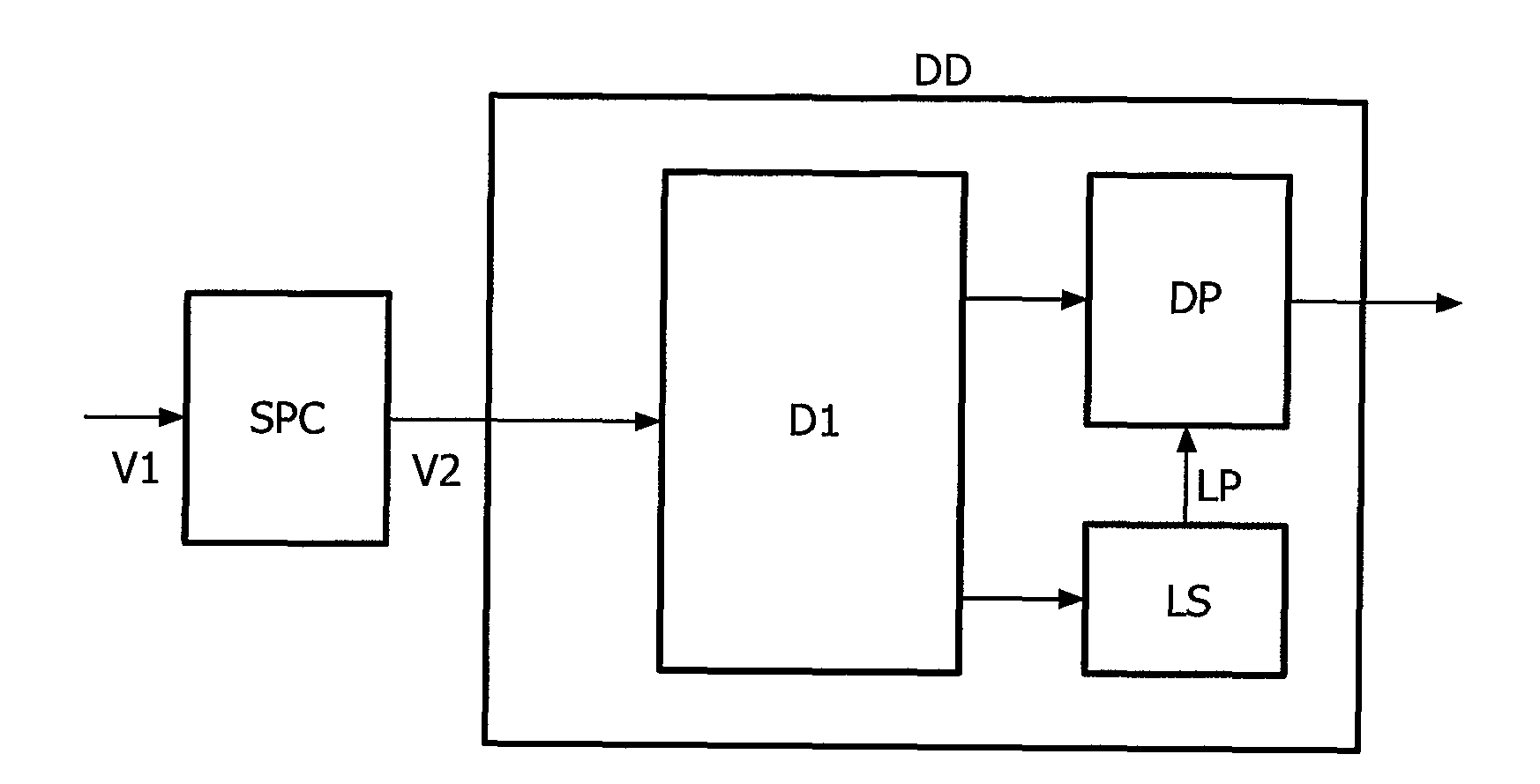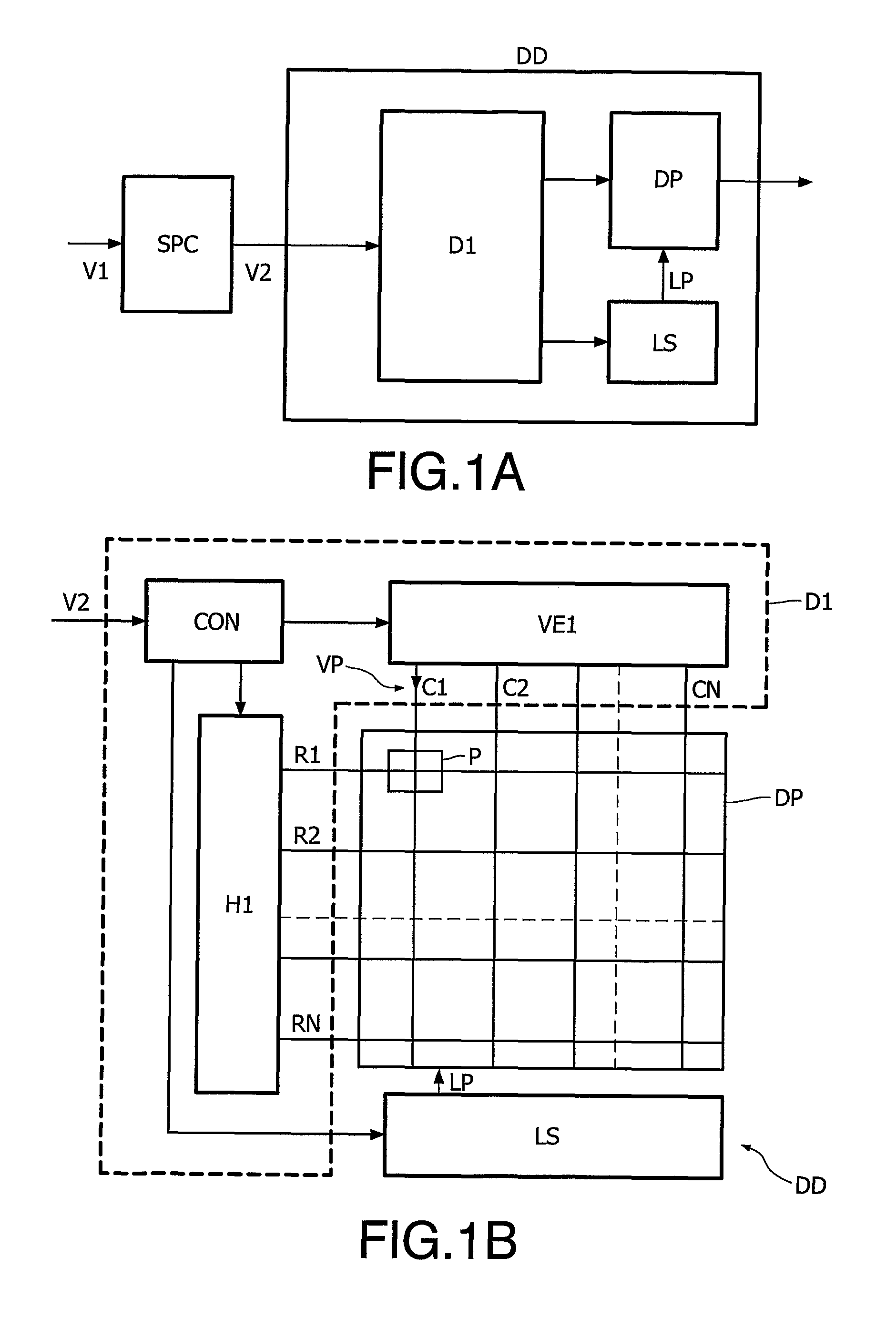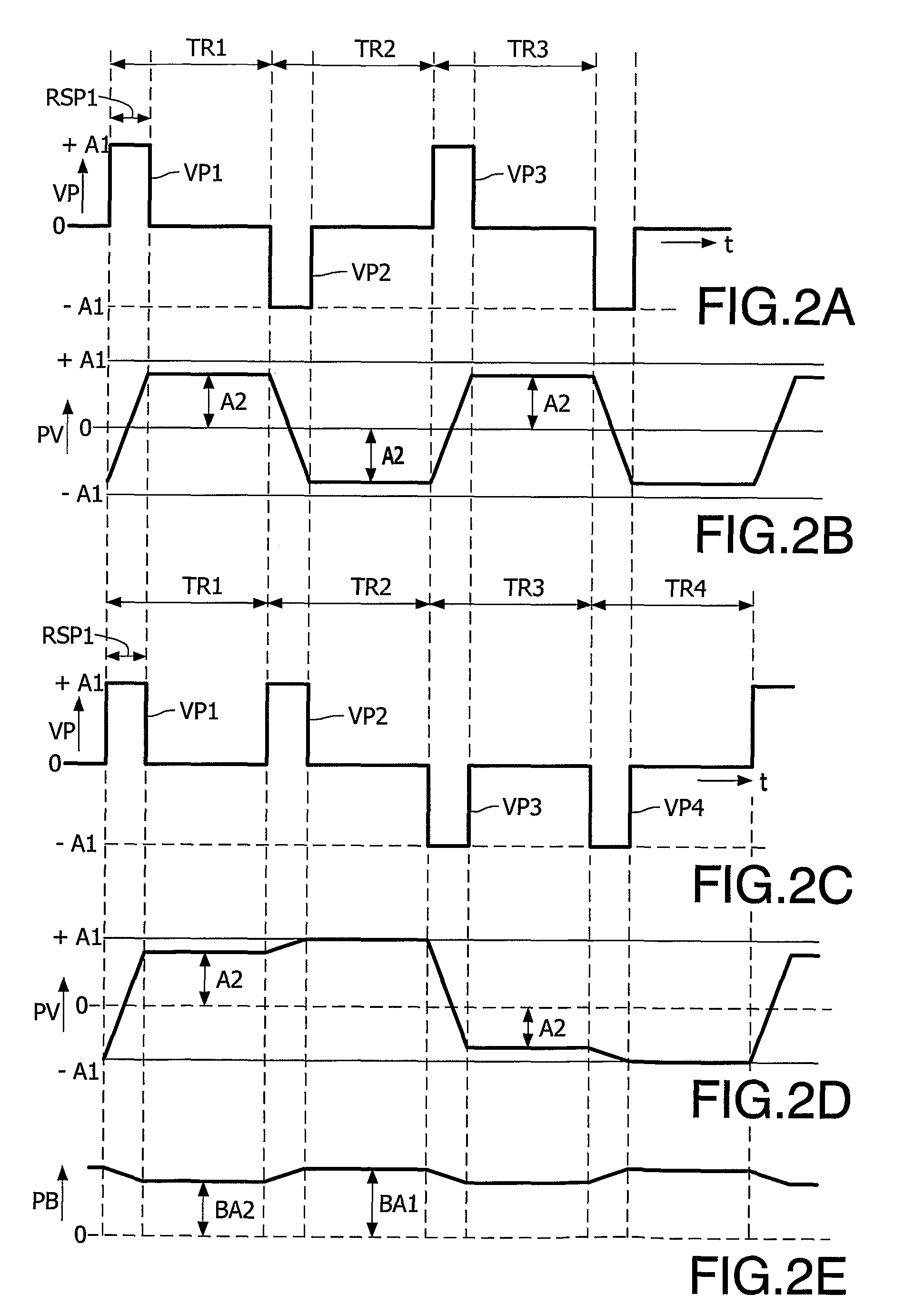Driving A Display With A Polarity Inversion Pattern
a technology of polarity inversion and display panel, which is applied in the direction of television systems, signal generators with optical-mechanical scanning, instruments, etc., can solve the problems of inability to reach the final value within any addressing period, inability to display images in uniform colors, and inability to display moving images at the same time, so as to reduce the visibility of flicker caused by repeating light pulses, the effect of displaying moving images and high ra
- Summary
- Abstract
- Description
- Claims
- Application Information
AI Technical Summary
Benefits of technology
Problems solved by technology
Method used
Image
Examples
first embodiment
[0045]In order to overcome this non-uniformity problem, in the invention the polarity inversion scheme is adapted to drive a pixel of the display panel DP with an adapted drive signal being the drive signal V2 having a first polarity during a first group of refresh frame periods, and being the drive signal V2 with a reversed polarity during a subsequent second group of refresh frame periods, the first group and the second group each comprising at least two refresh frame periods.
[0046]An example of such a scheme is shown in FIGS. 2C to 2E. The voltages pulses VP as function of time t form the adapted drive signal that is obtained by applying this polarity inversion scheme to the drive signal V2. As shown in FIG. 2C, a first group of refresh frame periods is formed by refresh frame periods TR1 and TR2. During this first group of refresh frame periods, voltage pulses VP1 and VP2 with a positive amplitude A1 are driving the pixel P. During a second group of refresh frame period formed b...
second embodiment
[0061]FIGS. 3D to 3F show the invention which overcomes above described problem. The phase of the inversion scheme is shifted with respect to the de-interlace pattern. As can be seen in FIG. 3D, a first group of refresh frame periods comprises a first and a second refresh frame which include the voltage pulses VP1 and VP2 having a positive polarity. As the second refresh frame is selected a refresh frame, which is obtained by using data at least partially obtained by converting from an image frame which is different from the image frame of which the first refresh frame is obtained. In this embodiment the second voltage pulse VP2 is included in the second refresh frame. This second voltage pulse VP2 has an amplitude B1 different from the amplitude A1 of the first voltage pulse, as its amplitude B1 is obtained from an image frame which is different from the image frame from which the amplitude A1 of the first voltage pulse VP1 is obtained (see FIG. 3A).
[0062]The resulting pixel voltag...
PUM
 Login to View More
Login to View More Abstract
Description
Claims
Application Information
 Login to View More
Login to View More - R&D
- Intellectual Property
- Life Sciences
- Materials
- Tech Scout
- Unparalleled Data Quality
- Higher Quality Content
- 60% Fewer Hallucinations
Browse by: Latest US Patents, China's latest patents, Technical Efficacy Thesaurus, Application Domain, Technology Topic, Popular Technical Reports.
© 2025 PatSnap. All rights reserved.Legal|Privacy policy|Modern Slavery Act Transparency Statement|Sitemap|About US| Contact US: help@patsnap.com



